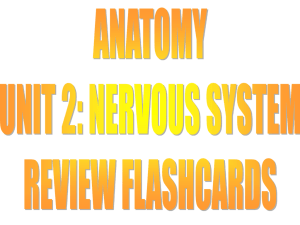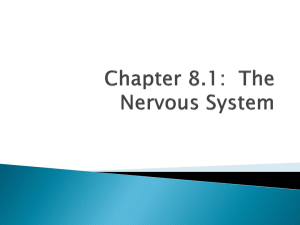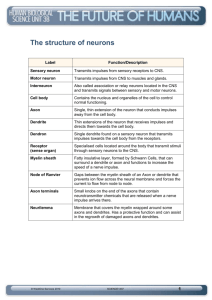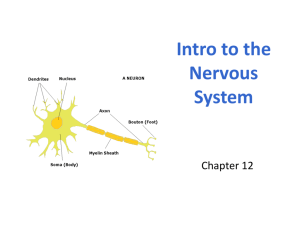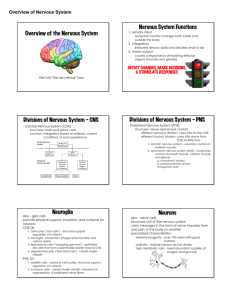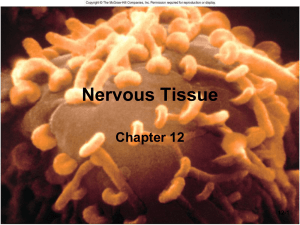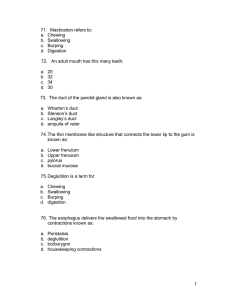What is resting membrane potential, how is it
advertisement
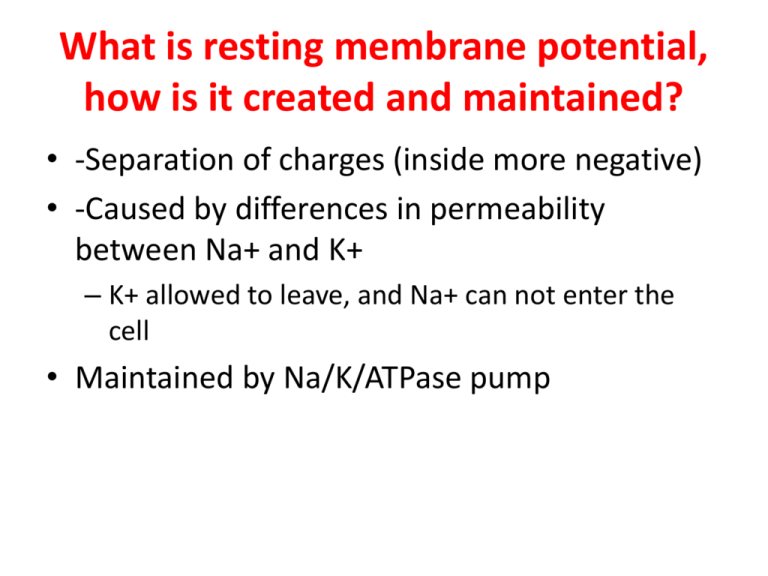
What is resting membrane potential, how is it created and maintained? • -Separation of charges (inside more negative) • -Caused by differences in permeability between Na+ and K+ – K+ allowed to leave, and Na+ can not enter the cell • Maintained by Na/K/ATPase pump What is an action potential? Graph and describe different parts of process • --Conduction of electric current • 1. If above threshold, voltage gated channels open = rapid depolarization • 2. Action potential ends; K+ channels open leading to hyperpolarization • 3. Explain transmission of a nerve signal across a synapse Why are impulses transmitted more quickly down a myelinated axon than an unmyelinated axon. • Myelin produces saltatory conduction, where action potentials are only generated at the nodes of Ranvier, rather than every adjacent part of the axon. • Occurs because myelin insulates the current and does not allow it to leak out What are the functions performed by the three types of neurons? Describe the structure and functions of the three parts of a neuron • Sensory Neurons: take info from sensory receptors to the CNS • Interneurons: Receive input from all sensory and other interneurons and communicate with motor neurons • Motor: Takes info from CNS to rest of body • Cell body: contains nucleus and other organelles (where neurotransmitters are built) • Dendrites: short extensions that receive signals • Axon: usually long that conducts the nerve impulse Name Major Parts of brain and give function for each part • • • • • • Cerebrum: Integrates and command center Hypothalamus: Helps maintain homeostasis Thalamus: Receives sensory input Cerebellum: Muscle control Pons: Bridge between cerebellum and CNS Medulla Oblongata: breathing and heart rate Compare two divisions of Autonomic Nervous System • Sympathetic: Fight or Flight • Parasympathetic: Rest and Digest Describe various types of Memory • Short-term • Episodic: (persons and events that you remember) • Semantic (numbers and words) • Skill memory (performing motor activities) • Long-term Describe structure of taste bud and explain how a taste cell functions • In the wall of a papillae containing a receptor for a specific type of taste (sweet, sour, salty, bitter and umami) • Chemicals in food bind to the receptors, generating a graded potential, leading to action potential (nerve signal that travels to the brain) – Gustatory cortex where taste is interpreted
